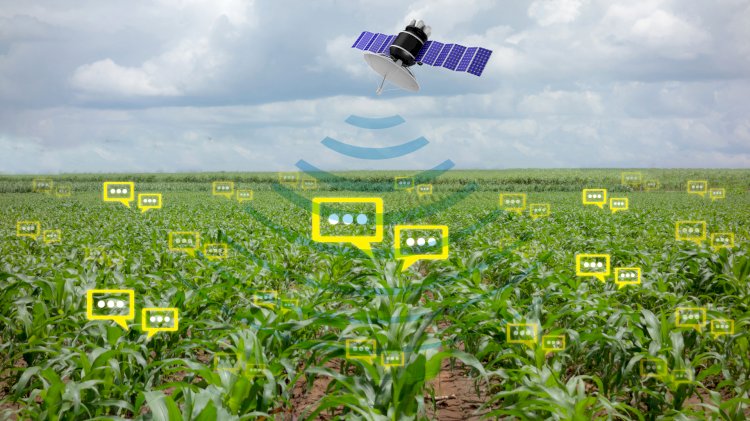From decision-making to data: AI and Big Data analytics to tackle the farm distress
Niruthi's data-to-decision analytical instruments represent the various stakeholders in agricultural insurance in a variety of ways.

Hyderabad-based, an agritech company Niruthi Climate and Ecosystem Services, is offering cost-effective solutions for rising crop production and reducing environment-related risks to marginal farmers and assisting governments in managing natural resources.
By bringing organized data from different sources weather stations, the internet of things (IoT), satellites, and drones, as well as farm-level data gathering through mobile apps to one single data technology platform it can provide a forecast of crop yields and a model of climate-risks and that, can display in a visualization dashboard. These farm-level insights can then used by governments, farmers, banks, input, insurance companies, and commodity markets.
On 25 February 2020, Mr. Kukunuri, CEO, Niruthi Climate and Ecosystem Services, said, “We plan to improve our processes to work on crops & are working to generate new services built on core technology to enhance access to credit markets, and allow financial transactions; including premium collection and claims payout through our CropSnap application, deliver market linkages as well as offer keen farm management which is to use data and insights to minimize resource use and maximize yield.”
Mr. Kukunuri further added, that the long-run plan is to make a platform for agriculture, serving the whole agroecosystem with farm-level insights, which can combine to meet various stakeholder requirements from farmers to financial institutions. By using an array of algorithms and tools for leveraging data from mobile phones, satellites, automated weather stations drones, collaborative computing, and modeling, niruthi’s technology effectively deals with the heterogeneity common in marginal farming structures.
He said that “We provide field-level insights by using Artificial Intelligence (AI) and Big Data analytics for the applications in climate analysis and remote sensing to improve rural livelihoods. The technology captures and combines fine-scale data from weather stations, satellites, and mobiles into cultured crop growth models empowered by advanced analytics. It offers solutions for modeling, monitoring, and forecasting crop conditions, which include location-specific crop health, weather, and crop yields by using technologies based on the prediction system and terrestrial observation.”
Niruthi is directed by a team of NASA scientists and retired scientists from CRIDA, IMD, and agriculture and other institutes. The team has a shared experience of over 300 years in agriculture, remote sensing, hydrology, climate science, ecology, and business development.
The data-to-decision analytical tools provided by the Niruthi, aid numerous agricultural insurance stakeholders in a variety of ways. One of the essential requirements for rising access to crop insurance as well as cultivating crop productivity is information about local weather forecasts and conditions, which allow insurers to assess the basis risk and for farmers to respond to changing weather conditions. Niruthi’s technology delivers such local weather information by merging solar radiation, rainfall, satellite data, and humidity with observations from a few, well-maintained weather stations. It established the technology in Maharashtra by generating the village-level daily weather data for over 40,000 villages by using the data from300 weather stations and four satellites.
Additionally, crop yield expectations are to serve as crucial inputs for insurance claim settlements as well as providing the basis for the government agencies to choose the least support price and assess food security. Factually, crop yields are estimated by using crop cutting experiments. Moreover, these anticipations are highly unpredictable due to the difficulty in conducting such operations, and they are prone to handling. The major challenge faced in India is the lack of reliable data as well as access to several government data sets, which are vital for implementing the farm-level solutions.
Additionally, Mr. Kukunuri said, “Frequently, satellite data are understood as a cure in the absence of the ground data. We believe this is a misunderstanding. While satellite data certainly benefits in scaling the solutions, and robust solutions can only depend upon when they are stranded by actual field data collection, which is to represent existing conditions.”





























